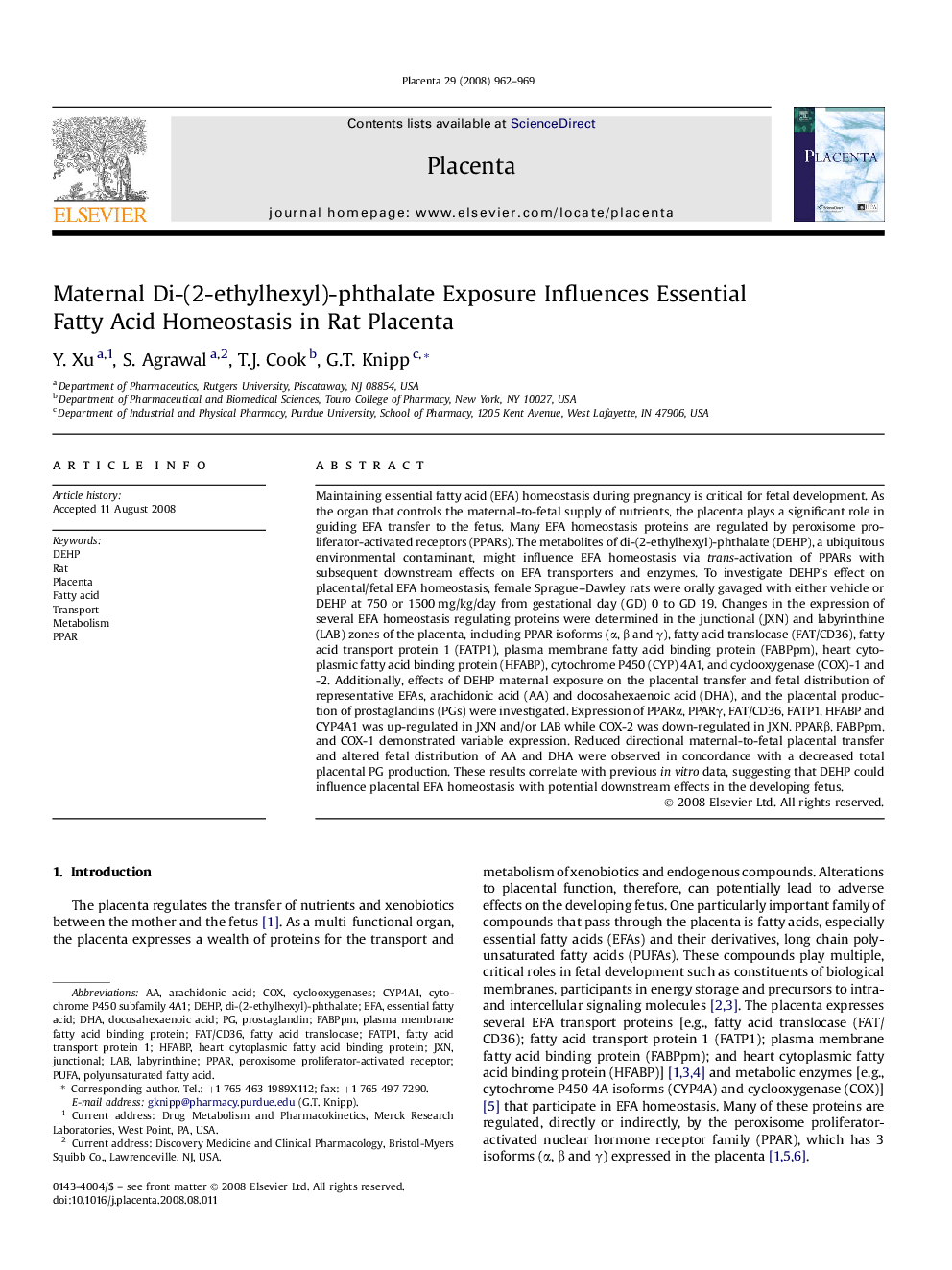| Article ID | Journal | Published Year | Pages | File Type |
|---|---|---|---|---|
| 2790191 | Placenta | 2008 | 8 Pages |
Maintaining essential fatty acid (EFA) homeostasis during pregnancy is critical for fetal development. As the organ that controls the maternal-to-fetal supply of nutrients, the placenta plays a significant role in guiding EFA transfer to the fetus. Many EFA homeostasis proteins are regulated by peroxisome proliferator-activated receptors (PPARs). The metabolites of di-(2-ethylhexyl)-phthalate (DEHP), a ubiquitous environmental contaminant, might influence EFA homeostasis via trans-activation of PPARs with subsequent downstream effects on EFA transporters and enzymes. To investigate DEHP's effect on placental/fetal EFA homeostasis, female Sprague–Dawley rats were orally gavaged with either vehicle or DEHP at 750 or 1500 mg/kg/day from gestational day (GD) 0 to GD 19. Changes in the expression of several EFA homeostasis regulating proteins were determined in the junctional (JXN) and labyrinthine (LAB) zones of the placenta, including PPAR isoforms (α, β and γ), fatty acid translocase (FAT/CD36), fatty acid transport protein 1 (FATP1), plasma membrane fatty acid binding protein (FABPpm), heart cytoplasmic fatty acid binding protein (HFABP), cytochrome P450 (CYP) 4A1, and cyclooxygenase (COX)-1 and -2. Additionally, effects of DEHP maternal exposure on the placental transfer and fetal distribution of representative EFAs, arachidonic acid (AA) and docosahexaenoic acid (DHA), and the placental production of prostaglandins (PGs) were investigated. Expression of PPARα, PPARγ, FAT/CD36, FATP1, HFABP and CYP4A1 was up-regulated in JXN and/or LAB while COX-2 was down-regulated in JXN. PPARβ, FABPpm, and COX-1 demonstrated variable expression. Reduced directional maternal-to-fetal placental transfer and altered fetal distribution of AA and DHA were observed in concordance with a decreased total placental PG production. These results correlate with previous in vitro data, suggesting that DEHP could influence placental EFA homeostasis with potential downstream effects in the developing fetus.
